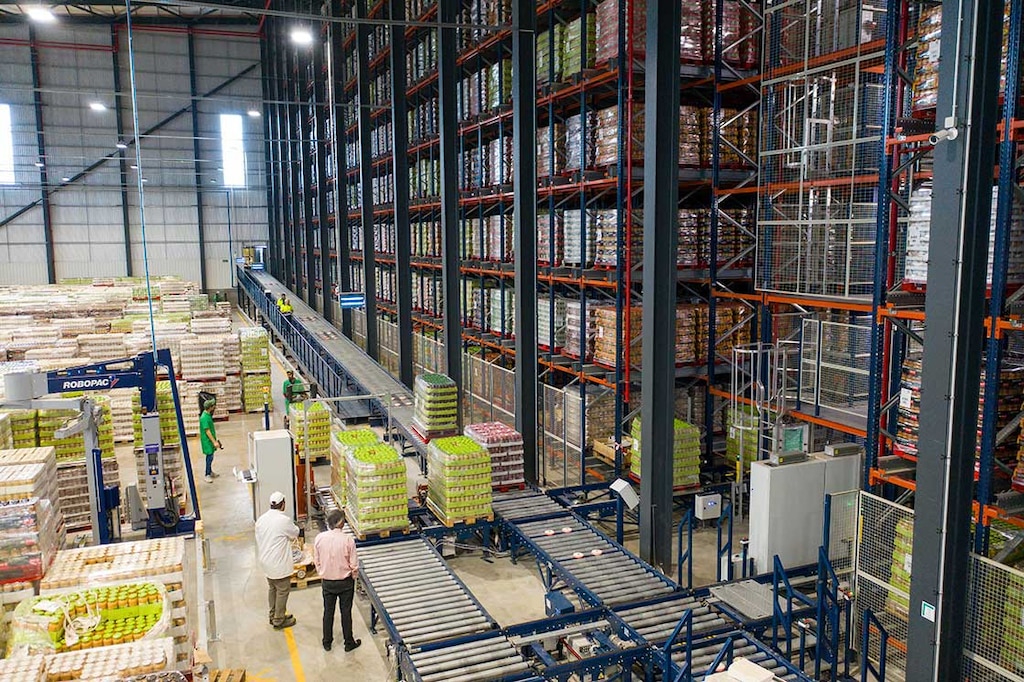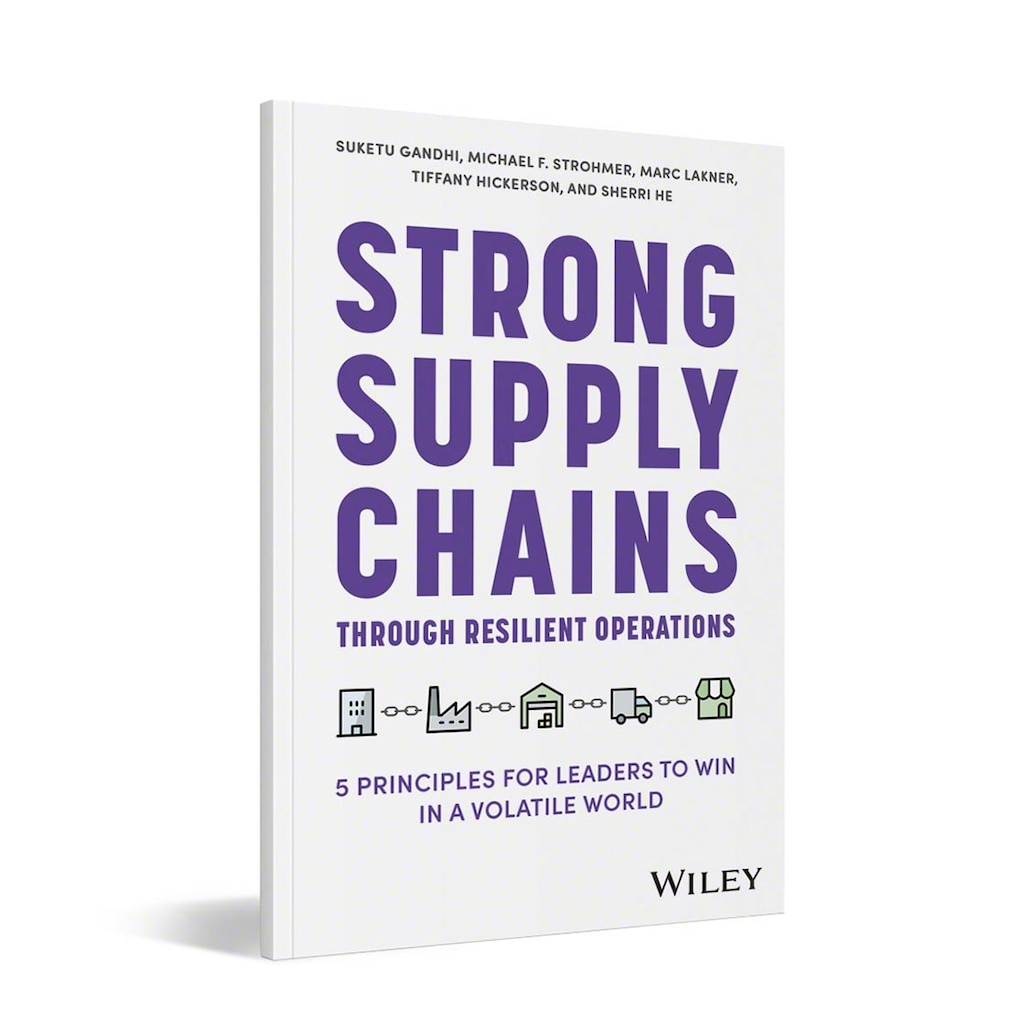
IN-DEPTH ANALYSIS
Suketu Gandhi, Michael F. Strohmer, Marc Lakner, Tiffany Hickerson and Sherri He, Kearney partners
The book Strong supply chains through resilient operations: 5 principles for leaders to win in a volatile world shows how to redefine operational strategies to ensure business growth and profitability. Drawing on decades of experience helping clients solve complex challenges, the authors share key insights for strengthening processes, people and systems — building more resilient and cost-effective operations.
To improve business resilience, you can start by changing your view of suppliers. They are sources of value. Rather than seeing them as individual links in your supply chain, envision them as partners. They need to be robust because, without them, you can’t build a strong supply chain.
“Sure,” you may be thinking, “you’re talking about supplier relationship management (SRM).” Yes and no. You do need relationships with your suppliers. And those relationships will be stronger when you manage them. But some people seem to think that SRM is all about bashing vendors over the head until they reduce the price another 4%. That’s not a relationship. Those people are practising supplier abuse management. As in any relationship, SRM involves communication on the executive level to understand the other party’s problems.
As in any relationship, SRM involves communication on the executive level to understand the other party’s problems
Rational, a manufacturer of equipment for professional kitchens, won the 2022 Overall category for Kearney’s Factory of the Year programme by working in very close collaboration with suppliers. The company’s SRM strategy focuses on technologies, quality criteria and building long-term trust so that suppliers are willing to make mutually beneficial investments. Its vendor fitness programs are about managing growth together. If Rational needs suppliers to commit to higher volumes, it sends experts to help implement and optimise processes, ensuring that development is sustainable for all parties.
Do your suppliers help you with design? Are they involved in open collaboration with teams at your company or those of third parties? Have you given them the visibility they need to make smart and profitable decisions? Managing collaboration, transparency, and satisfaction is the heart of your SRM: suppliers are a source of value, and you should maximise that, not minimise the cost.
We’re not saying, “Don’t pay attention to costs.” Just, “Don’t pay attention only to costs.” More than sources of value, key suppliers should be partners. Trust is always a two-way street:
- You may help suppliers in their time of need, trusting that they’ll help you overcome your own crises.
- They may ask to see your sales and operations planning (S&OP) details, trusting that you’ll fix anything that’s wrong. After all, if you have S&OP issues, your suppliers often pay the price.
- You may ask to see your supplier’s books, knowing that they’ll trust you not to negotiate on cost. Instead, you want to see where they’re struggling with their own suppliers, for example, to potentially help with negotiations or re-engineering.
You certainly can’t do this with all suppliers. Your engineers are going to travel to their site, your chief procurement officer (CPO) will meet with their CEO, and even your CEO would ideally meet their CEO. Obviously, this is only for major suppliers of huge quantities on multimillion-dollar contracts. Nevertheless, you can leverage that attitude and seek to establish a cooperative culture towards suppliers in general, fostering relationships based on trust and collaboration.
Resilience is about strengthening the links in your chain, and building trust with key suppliers achieves this. When they’re resilient, the next crisis won’t break them. It won’t tempt them to move to other customers. And thus it won’t break you.

End-to-end thinking builds resilience
Supplier partnerships are not just about shared spreadsheets and engineering specs. Your vendors should be able to see how their inputs bring value to the final product. For example, if you’re a car manufacturer and your steel producer understands your technical specs, that’s good. But if that supplier also understands that your customer is looking for a cool design, that’s a partnership.
If you’re a car manufacturer, your steel producer should understand your technical specs. But if that supplier also understands that your customer is looking for a cool design, that’s a partnership
Likewise, if you make iPhones, your supplier needs to understand more than the value of Apple: “Ooh, Apple is a powerful company, I’d better do exactly as they say.” Instead, your supplier should appreciate the customer’s value — the value of having glass that I can touch but that doesn’t break if I drop it. That’s a supplier who builds your priorities into its decisions: “Ooh, my engineers just stumbled across a way to make that glass thinner. Let me tell Apple!”
But how is the supplier going to gain that knowledge? From your procurement team. These people used to do what we call desktop procurement — research into markets, costs, prices, and so on. Instead, they have to get to know suppliers and their products. The more they know about each, the more they can collaborate, develop, re-engineer and otherwise transform the supply chain.
In other words, your category buyers need to be real managers of the category. If they just focus on “How can I get savings?”, they do not have the big picture. They should to know everything about the market: What are the technologies? What is unique? What is distinctive about each supplier?
It’s imperative to know everything about the market: What are the technologies? What is unique? What is distinctive about each supplier?
For instance, when a manufacturer of industrial assets had an opportunity to switch cable suppliers, the category manager did more than look at the 25% savings opportunity. She called engineering to learn how the cables were used and what drove materials costs. She learned that cheaper cables might break on average within four years — but the product had a five-year warranty. The company would be more resilient by rejecting the switch and discussing collaborative cost reductions with the incumbent supplier. But would she have made that choice if her incentives measured only procurement savings?
Yet supplier management is not merely a job for procurement. Your entire firm must think end-to-end about supply chain resilience. For example, if procurement is going to find alternative materials, it requires support from R&D. And if it’s going to qualify those materials, it needs testing support from manufacturing.
Furthermore, a resilient supply chain may require devolved and decentralised decision-making. Modern networks have become so complex that no single player has the power to control the whole value chain. You can no longer use the traditional siloed approach to managing them. Everyone needs to collaborate more. All participants — from sub-tier suppliers to tech platforms, producers and distributors — have to deploy predictive data analytics to achieve maximum visibility. You want a clear view of changing demand and supply constraints as they emerge, as well as hidden risks that could be lurking both upstream and downstream.
You want a clear view of changing demand and supply constraints, so it’s essential to deploy predictive data analytics for maximum visibility
This is why we talk about empowering supplier ecosystems. The phrase “supply chain” is still handy because so many people know what it means. But in a sense, both parts of it are outdated:
- You’re no longer looking at supplies that arrive at your factory, but rather a value chain that goes all the way to the end consumer.
- Instead of treating the relationship as a “chain” — with all the “weakest-link” implications of that word — you should manage it as an ecosystem, leaning into the interdependencies and streamlining collaboration between key players.

